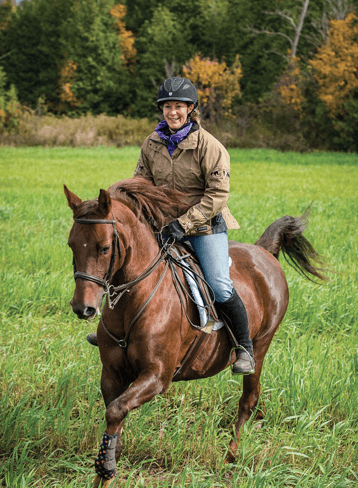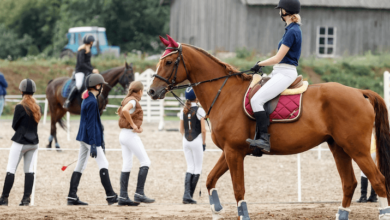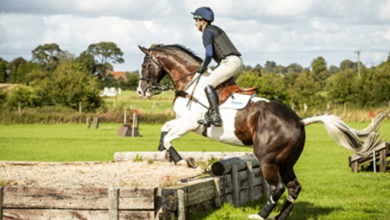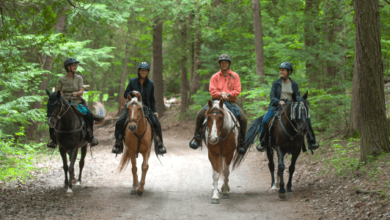How can riders prepare their horses for encountering wildlife on trails?

Introduction
Encountering wildlife while horseback riding on trails can be both exhilarating and challenging. For many riders, these encounters are a highlight of the trail experience. However, without proper preparation, they can also lead to potentially dangerous situations. Preparing horses for wildlife encounters is essential to ensure safety and confidence for both horse and rider. This article provides comprehensive guidelines and strategies to help riders train their horses for these unexpected encounters.
Understanding Horse Behavior
Horses are prey animals with a natural instinct to flee from perceived threats. This instinct, while essential for their survival in the wild, can make encounters with wildlife on trails quite challenging. Recognizing and understanding a horse’s fear responses is the first step in preparing for these encounters. Desensitization plays a crucial role in helping horses remain calm when faced with unfamiliar wildlife.
Types of Wildlife on Trails
Different regions host various types of wildlife that riders may encounter. From deer and bears to snakes and birds, knowing what kind of animals inhabit your riding area is vital. Each species presents unique challenges and potential dangers. Familiarizing yourself with the common wildlife in your area and their behaviors can help you better prepare your horse for these encounters.
Importance of Training
Training is fundamental for ensuring the safety and confidence of both horse and rider. Proper training helps in creating positive experiences on the trail, reducing the likelihood of dangerous situations. A well-prepared horse is more likely to remain calm and manageable when encountering wildlife, making the ride enjoyable for everyone involved.
Early Exposure Techniques
Introducing horses to potential wildlife scenarios in a controlled environment is an effective early exposure technique. Gradual exposure, starting with mild stimuli and progressively increasing the intensity, helps horses adjust without overwhelming them. Positive reinforcement during these sessions encourages horses to associate these encounters with positive outcomes.
Desensitization Methods
Desensitization involves exposing horses to various sounds, scents, and visuals that they might encounter on the trail. Using recordings of animal sounds, placing scented objects, and employing visual aids can simulate wildlife encounters. Mock encounters, where controlled and safe simulations of wildlife are presented, help in building the horse’s confidence and reducing fear.
Trail-Specific Training Exercises
Implementing trail-specific training exercises can significantly improve a horse’s preparedness for wildlife encounters. Creating obstacle courses that mimic the trail environment, including varied terrain and simulated wildlife, helps horses become accustomed to potential challenges. Regular practice on these courses enhances the horse’s ability to remain calm and responsive.
Building Rider Confidence
A calm and confident rider can positively influence a horse’s reaction to wildlife. Riders should practice staying calm and composed, even in unexpected situations. Learning to read the horse’s body language and understanding how to handle emergencies are essential skills. Effective communication between horse and rider can prevent panic and ensure safety.
Essential Gear and Equipment
Equipping yourself and your horse with the right gear is crucial for safety. Safety gear such as helmets and protective vests for riders, and appropriate saddles and bridles for horses, are essential. Communication devices like two-way radios or mobile phones are vital for staying connected with others while on the trail. Training aids, such as calming sprays and noise desensitization tools, can also be beneficial.
Recognizing Signs of Distress
Understanding the signs of distress in your horse is key to preventing accidents. Common signs include widened eyes, flared nostrils, tense muscles, and erratic movements. Learning to recognize these signs early allows you to take appropriate action, such as dismounting and calming your horse, before the situation escalates.
Dealing with Specific Wildlife
Different animals require different approaches. For example, deer are often startled easily, while bears may pose a more significant threat. Knowing how to react to specific wildlife is essential. For deer, maintaining a calm demeanor and slowly moving away can prevent startling them. In contrast, for bears, making noise and standing your ground while giving them space is advisable.

Role of a Riding Companion
Riding with a companion can provide additional safety and support. Companions can help in spotting wildlife ahead of time, assist in calming a distressed horse, and provide moral support during challenging situations. Sharing knowledge and experiences with each other can also enhance your preparedness.
Preparing for the Unexpected
Despite thorough training, unexpected situations can still arise. Having an emergency protocol in place, including first-aid kits for both horse and rider, and a communication plan for seeking help, is crucial. Regularly reviewing and practicing these protocols ensures you are ready to handle emergencies effectively.
Regular Training Routines
Consistency in training is vital for long-term success. Regularly exposing your horse to varied scenarios helps in building and maintaining their confidence. Incorporating wildlife awareness into your training routines, varying the types of exposure, and progressively increasing the difficulty level keeps the training effective and engaging.
Positive Reinforcement Strategies
Using positive reinforcement techniques, such as rewards and praise, encourages desired behaviors in horses. Creating positive associations with wildlife encounters through treats and verbal praise helps in reinforcing calm behavior. Consistently rewarding your horse for staying calm builds a positive and trusting relationship.
Case Studies and Real-Life Experiences
Learning from experienced riders who have successfully trained their horses for wildlife encounters can provide valuable insights. Case studies and real-life experiences highlight practical tips, common challenges, and effective strategies. These stories offer encouragement and proven methods for achieving similar success.
Veterinary Considerations
Regular health checks and consultations with veterinarians are essential. Ensuring your horse is physically and mentally fit for trail riding involves routine vaccinations, dental care, and overall health monitoring. Veterinarians can also provide advice on specific concerns related to wildlife encounters.
Creating a Safe Riding Environment
Choosing trails that are known for being safe and well-maintained contributes to a positive riding experience. Understanding local wildlife patterns and adhering to trail etiquette, such as keeping noise levels down and staying on designated paths, helps in reducing wildlife disturbances and ensuring a safe environment.
Technology and Training
Utilizing technology can enhance your training efforts. Apps and GPS devices help in tracking your rides and identifying wildlife hotspots. Virtual training tools and online resources offer additional support and knowledge for preparing your horse for wildlife encounters.
Legal and Ethical Considerations
Adhering to wildlife protection laws and practicing responsible riding is crucial. Respecting wildlife habitats, avoiding feeding or interacting with wild animals, and leaving no trace are ethical practices that contribute to the preservation of natural environments and the safety of both riders and wildlife.
After an Encounter
After encountering wildlife, it is important to assess your horse’s well-being and apply calming techniques if necessary. Reflecting on the experience, identifying what went well and what could be improved, helps in refining your training methods. Learning from each encounter ensures continuous improvement.
Building Trust and Bond with Your Horse
Strengthening the bond between horse and rider is foundational for effective training. Trust-building exercises, such as spending quality time together, grooming, and engaging in fun activities, enhance the overall relationship. A strong bond ensures better communication and cooperation during wildlife encounters.
Incorporating Wildlife Awareness in Training
Making wildlife awareness an integral part of your training routine keeps it relevant and effective. Regularly updating your training methods to include new scenarios and challenges ensures your horse remains well-prepared. Keeping the training engaging and varied helps in maintaining your horse’s interest and progress.
Community Resources and Support
Joining local riding clubs and online forums provides access to a wealth of knowledge and support. Engaging with other riders, sharing experiences, and seeking advice from experts can greatly enhance your training efforts. Community resources offer valuable insights and encouragement.
Dealing with Seasonal Wildlife Changes
Wildlife behavior and presence can vary with seasons. Understanding these seasonal patterns helps in adapting your training methods. For example, spring and summer might see more active wildlife, requiring heightened awareness and preparedness during these times.
Myth-Busting: Common Misconceptions
There are many myths and misconceptions about horses and wildlife encounters. Debunking these myths with factual information ensures that riders are well-informed and prepared. For example, the belief that all horses will automatically panic at the sight of wildlife can be countered with proper training and exposure.
Preparing Young Horses
Young and inexperienced horses require special considerations. Gradually introducing them to the trail environment and potential wildlife encounters in a controlled manner helps in building their confidence. Patience and consistency are key when working with young horses.
Psychological Aspects of Training
Understanding the psychological aspects of training is crucial. Horses, like humans, can experience stress and anxiety. Creating a training environment that is mentally stimulating and supportive helps in preparing horses for wildlife encounters without causing undue stress.
Training Older Horses
Older horses might have different needs and limitations. Adjusting training methods to accommodate their physical and mental condition ensures they remain capable and confident on the trail. Regular health checks and appropriate training routines are essential for older horses.
Importance of Rider Knowledge and Education
Continuous learning and education are vital for riders. Attending workshops, reading literature, and staying updated with the latest training techniques and wildlife information enhances your ability to prepare your horse effectively. Knowledgeable riders are better equipped to handle wildlife encounters.
Long-Term Benefits of Proper Preparation
The long-term benefits of properly preparing your horse for wildlife encounters are immense. Not only does it enhance the riding experience, but it also strengthens the bond between horse and rider. A well-prepared horse is safer, more confident, and more enjoyable to ride.
Sustainable and Responsible Riding
Practicing sustainable and responsible riding ensures the preservation of natural environments and the safety of wildlife. Eco-friendly practices, such as minimizing waste and respecting wildlife habitats, contribute to a positive impact on the environment and the riding community.



